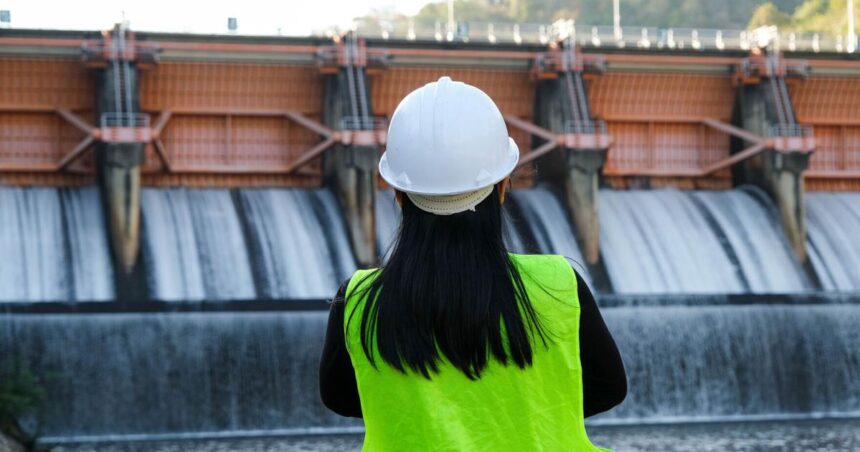When you flip on the lights, plug in your phone or turn on the heat at home or at work, there’s a high likelihood that the electricity powering your daily life flows from hydropower. Part of Montana’s commitment to harnessing its natural resources responsibly and sustainably, hydropower accounts for about 30% of Montana’s in-state electricity generation. In many areas of Western Montana, 80% or more of the electricity powering homes and businesses comes from hydropower.
Here are five facts about hydropower in Montana that you may not know.
1. Hydropower is the original renewable. “Thanks largely to hydropower, Montana ranks among the top 10 states with the largest share of electricity generated from renewable energy sources,” said Mark Johnson, general manager of Flathead Electric Cooperative in Kalispell. “Hydropower is carbon-free, affordable and reliable, which makes it a great partner with wind and solar.” There are 29 dams in Montana that can generate hydroelectricity, including two federally operated dams — Hungry Horse and Libby.
People are also reading…
2. Hydropower is reliable. “Hydroelectric dams are like giant batteries,” Johnson explained. “Water stored behind the dam is potential energy that can be released to meet electrical demand as we power our homes and businesses.” Other renewable sources like wind and solar produce power only when the sun is shining or when the wind is blowing, he said.
“The on-demand nature of hydropower means that we can instantaneously meet demand needs and fill in the gaps when needed.” In extreme weather events like the deep freezes Montana experienced in December of 2022 and January of 2024 when there was almost no wind or sun to generate power, hydroelectric dams across the region ramped up and provided critical power reserves, according to Johnson. “Hydropower literally kept the lights on and the heaters running,” he said.
3. Hydropower is affordable. “Many people don’t know that Montana has the highest residential per capita energy consumption of any state in the nation, which makes it imperative that energy costs stay low for our most vulnerable populations,” Johnson said. “The poverty rate is around 15% in the Montana counties served by cooperatives that buy federal hydropower,” he said. “The energy burden is much higher for these individuals because their energy costs are a higher percentage of their monthly expenses. Hydropower is one of the most affordable resources available and helps us keep our electric rates some of the lowest in the nation.”
4. Hydropower helps drive Montana’s economy. Montana’s vast landscape and dispersed population create unique business challenges, Johnson noted.
“The availability of affordable and reliable hydropower attracts businesses to Montana, contributing to job creation and economic growth,” he said. Johnson added that affordable and reliable electric rates are crucial for Montana businesses, impacting operational costs but also influencing decisions on business expansion and location. The availability of hydropower in Montana helps keep businesses competitive by offering a stable, cost-effective energy source, he said. “This is particularly important for energy-intensive industries and can be a deciding factor for businesses considering Montana as a potential location.”
5. Hydropower is a key part of Montana’s environmental stewardship. A clean, renewable energy source, hydropower also incorporates measures to protect and enhance salmon populations, helping to preserve the Northwest’s rich fishing heritage. Funds generated through hydropower electric rates help restore salmon and steelhead populations through habitat restoration, fish passage improvements at federally operated dams and federally owned hatcheries. Johnson points to the 98% survival rate of fish passing through the Ice Harbor Dam on the Snake River since 2016 when updated turbines were installed. “These investments have paid off, resulting in dams that can coexist with fish while providing their other critical functions for Montana and the Northwest,” he said.
In addition, carbon-free hydroelectric dams also create reservoirs and irrigation ditches that are critical to growing sustainable crops. The dams and locks on the Columbia River are an essential part of the Pacific Northwest transportation system. “Farmers in Montana and surrounding states use this system to transport wheat and other crops to market competitively and efficiently, and with a significantly smaller carbon footprint than truck or rail,” Johnson said.
“Hydropower is not just powering our present; it’s securing our future,” Johnson aptly puts it. “It’s a clean, renewable force that’s as much a part of Montana’s identity as the rivers that flow through it.”
To learn more about how hydropower supports daily life in Montana, visit nwriverpartners.org.





